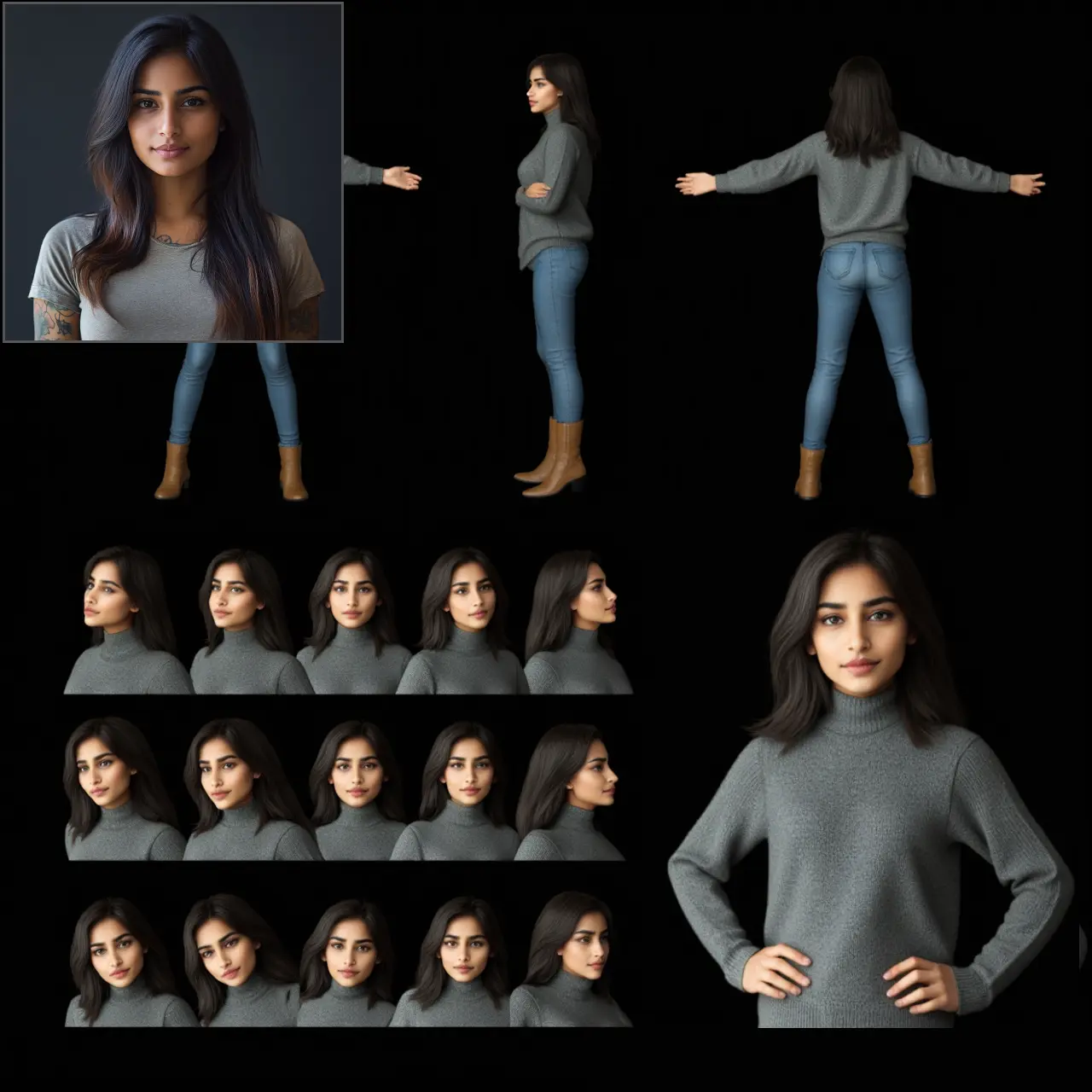ComfyUI Node: VAE Encode & Inpaint Conditioning
INPAINT_VAEEncodeInpaintConditioning
Categoryinpaint
Acly (Account age: 4089days) Extension
ComfyUI Inpaint Nodes Latest Updated
2025-03-31 Github Stars
0.91K
How to Install ComfyUI Inpaint Nodes
Install this extension via the ComfyUI Manager by searching for ComfyUI Inpaint Nodes- 1. Click the Manager button in the main menu
- 2. Select Custom Nodes Manager button
- 3. Enter ComfyUI Inpaint Nodes in the search bar
Visit ComfyUI Online for ready-to-use ComfyUI environment
- Free trial available
- 16GB VRAM to 80GB VRAM GPU machines
- 400+ preloaded models/nodes
- Freedom to upload custom models/nodes
- 200+ ready-to-run workflows
- 100% private workspace with up to 200GB storage
- Dedicated Support
VAE Encode & Inpaint Conditioning Description
Facilitates inpainting by encoding and conditioning image data for high-quality results.
VAE Encode & Inpaint Conditioning:
The VAE Encode & Inpaint Conditioning node is designed to facilitate the inpainting process by encoding image data and conditioning it for inpainting tasks. This node leverages a Variational Autoencoder (VAE) to encode the input image and mask, producing latent representations that are essential for high-quality inpainting. By conditioning both positive and negative inputs, this node ensures that the inpainting model receives well-prepared data, leading to more accurate and visually appealing results. The primary goal of this node is to streamline the inpainting workflow, making it easier for AI artists to fill in missing or corrupted parts of an image with coherent and contextually appropriate content.
VAE Encode & Inpaint Conditioning Input Parameters:
positive
The positive parameter represents the conditioning data that positively influences the inpainting process. It is used to guide the model towards desired outcomes by providing favorable conditions. This parameter is crucial for ensuring that the inpainting results align with the intended artistic vision.
negative
The negative parameter serves as the conditioning data that negatively influences the inpainting process. It helps the model understand what to avoid or minimize in the output, thereby refining the inpainting results by steering clear of undesirable features or artifacts.
vae
The vae parameter is the Variational Autoencoder model used to encode the input image and mask. The VAE plays a critical role in transforming the image data into latent representations, which are then used for inpainting. This parameter ensures that the encoding process is handled by a reliable and efficient model.
pixels
The pixels parameter is the input image that needs inpainting. It provides the raw pixel data that the VAE will encode. This parameter is essential as it contains the visual information that will be processed and conditioned for inpainting.
mask
The mask parameter is a binary mask that indicates the regions of the input image that require inpainting. It helps the model identify which parts of the image need to be filled in or corrected. This parameter is crucial for guiding the inpainting process to the appropriate areas of the image.
VAE Encode & Inpaint Conditioning Output Parameters:
positive
The positive output is the conditioned data that positively influences the inpainting process. It is the result of encoding the input positive conditioning data, ensuring that the inpainting model receives well-prepared and favorable conditions for generating the desired output.
negative
The negative output is the conditioned data that negatively influences the inpainting process. It is the result of encoding the input negative conditioning data, helping the model avoid undesirable features and refine the inpainting results.
latent_inpaint
The latent_inpaint output is a dictionary containing the latent representations specifically prepared for inpainting. It includes the samples key, which holds the encoded latent image, and the noise_mask key, which contains the rounded noise mask. This output is essential for the inpainting model to generate coherent and contextually appropriate content.
latent_samples
The latent_samples output is the latent representation of the original input image. It provides the encoded version of the input pixels, which can be used for further processing or analysis. This output is important for understanding the latent space representation of the input image.
VAE Encode & Inpaint Conditioning Usage Tips:
- Ensure that the input image (
pixels) and mask (mask) are correctly aligned and of the same dimensions to avoid errors during the encoding process. - Use high-quality VAE models for the
vaeparameter to achieve better encoding and inpainting results. - Adjust the
positiveandnegativeconditioning data to fine-tune the inpainting output according to your artistic vision.
VAE Encode & Inpaint Conditioning Common Errors and Solutions:
Input image and mask dimensions mismatch
- Explanation: The input image and mask must have the same dimensions for the encoding process to work correctly.
- Solution: Ensure that the
pixelsandmaskparameters are of the same size before passing them to the node.
Invalid VAE model
- Explanation: The VAE model provided in the
vaeparameter is not valid or not properly loaded. - Solution: Verify that the VAE model is correctly loaded and compatible with the node's requirements.
Incorrect conditioning data format
- Explanation: The
positiveornegativeconditioning data is not in the expected format. - Solution: Ensure that the conditioning data is correctly formatted and compatible with the node's input requirements.
VAE Encode & Inpaint Conditioning Related Nodes
RunComfy is the premier ComfyUI platform, offering ComfyUI online environment and services, along with ComfyUI workflows featuring stunning visuals. RunComfy also provides AI Playground, enabling artists to harness the latest AI tools to create incredible art.



